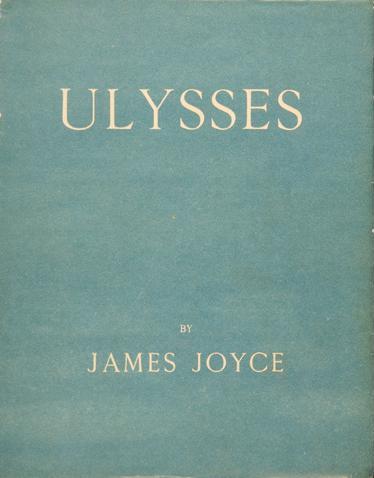Stream of consciousness
Stream of consciousness is a narrative mode or method that attempts to capture the flow of thoughts and feelings that pass through the mind. The term was first introduced in psychology before being adopted by literary critics and writers to describe a particular style of writing. This method of narration is characterized by a flow of thoughts and images, often in an unpuncted or disjointed manner, that mimic the natural flow of consciousness in an individual's mind.
Origins and Development[edit | edit source]
The concept of stream of consciousness as a narrative technique is often attributed to the psychologist William James, who introduced the term in his book The Principles of Psychology (1890). James used the term to describe the unbroken flow of perceptions, thoughts, and feelings in the waking mind. Later, the technique was adopted by writers in the early 20th century, notably in the works of Virginia Woolf, James Joyce, and Marcel Proust, who sought to capture the complexity, subtlety, and dynamism of human consciousness.
Characteristics[edit | edit source]
Stream of consciousness writing is marked by various characteristics that distinguish it from more traditional narrative techniques. These include:
- Lack of Punctuation and Syntax: Sentences may be fragmented or run-on, reflecting the way thoughts often flow in the mind.
- Free Association: Ideas, memories, and images may be connected in a nonlinear way, similar to the psychological concept of free association.
- Interior Monologue: The technique often involves a direct presentation of a character's thoughts and feelings, without the mediation of a narrator.
- Temporal Dislocation: The narrative may jump back and forth in time, reflecting the non-linear nature of human memory and thought.
In Literature[edit | edit source]
Stream of consciousness has been employed by numerous authors to various effects. James Joyce's Ulysses (1922) is often cited as a paramount example of this technique, particularly in the "Penelope" episode, which consists of a long, unpunctuated monologue by Molly Bloom. Virginia Woolf's Mrs Dalloway (1925) and To the Lighthouse (1927) also make extensive use of stream of consciousness to explore the inner lives of their characters. Similarly, William Faulkner's The Sound and the Fury (1929) employs stream of consciousness to convey the fragmented and chaotic mental states of its characters.
Criticism and Analysis[edit | edit source]
While stream of consciousness has been praised for its ability to depict the complexities of human thought and emotion, it has also faced criticism. Some readers and critics find the technique challenging to follow due to its lack of structure and coherence. Others argue that it can be overly introspective and fail to engage with the external world. Despite these criticisms, stream of consciousness remains a significant and influential narrative technique in modern and postmodern literature.
See Also[edit | edit source]
This article is a literature-related stub. You can help WikiMD by expanding it!
Transform your life with W8MD's budget GLP1 injections from $125
W8MD offers a medical weight loss program NYC and a clinic to lose weight in Philadelphia. Our W8MD's physician supervised medical weight loss centers in NYC provides expert medical guidance, and offers telemedicine options for convenience.
Why choose W8MD?
- Comprehensive care with FDA-approved weight loss medications including:
- loss injections in NYC both generic and brand names:
- weight loss medications including Phentermine, Qsymia, Diethylpropion etc.
- Accept most insurances for visits or discounted self pay cost.
- Generic weight loss injections starting from just $125.00 for the starting dose
- In person weight loss NYC and telemedicine medical weight loss options in New York city available
- Budget GLP1 weight loss injections in NYC starting from $125.00 biweekly with insurance!
Book Your Appointment
Start your NYC weight loss journey today at our NYC medical weight loss, and Philadelphia medical weight loss Call (718)946-5500 for NY and 215 676 2334 for PA
Search WikiMD
Ad.Tired of being Overweight? Try W8MD's NYC physician weight loss.
Semaglutide (Ozempic / Wegovy and Tirzepatide (Mounjaro / Zepbound) available. Call 718 946 5500.
Advertise on WikiMD
|
WikiMD's Wellness Encyclopedia |
| Let Food Be Thy Medicine Medicine Thy Food - Hippocrates |
Translate this page: - East Asian
中文,
日本,
한국어,
South Asian
हिन्दी,
தமிழ்,
తెలుగు,
Urdu,
ಕನ್ನಡ,
Southeast Asian
Indonesian,
Vietnamese,
Thai,
မြန်မာဘာသာ,
বাংলা
European
español,
Deutsch,
français,
Greek,
português do Brasil,
polski,
română,
русский,
Nederlands,
norsk,
svenska,
suomi,
Italian
Middle Eastern & African
عربى,
Turkish,
Persian,
Hebrew,
Afrikaans,
isiZulu,
Kiswahili,
Other
Bulgarian,
Hungarian,
Czech,
Swedish,
മലയാളം,
मराठी,
ਪੰਜਾਬੀ,
ગુજરાતી,
Portuguese,
Ukrainian
Medical Disclaimer: WikiMD is not a substitute for professional medical advice. The information on WikiMD is provided as an information resource only, may be incorrect, outdated or misleading, and is not to be used or relied on for any diagnostic or treatment purposes. Please consult your health care provider before making any healthcare decisions or for guidance about a specific medical condition. WikiMD expressly disclaims responsibility, and shall have no liability, for any damages, loss, injury, or liability whatsoever suffered as a result of your reliance on the information contained in this site. By visiting this site you agree to the foregoing terms and conditions, which may from time to time be changed or supplemented by WikiMD. If you do not agree to the foregoing terms and conditions, you should not enter or use this site. See full disclaimer.
Credits:Most images are courtesy of Wikimedia commons, and templates, categories Wikipedia, licensed under CC BY SA or similar.
Contributors: Prab R. Tumpati, MD



